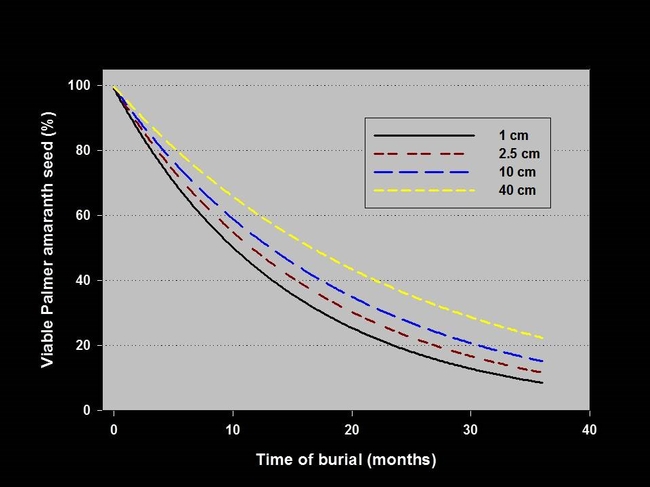This is the last in my series of posts outlining current University of California weed science research published in the California Weed Science Society (CWSS) Research Update and News (June 2013, Volume 9, #2).
Lynn Sosnoskie (UC Davis, Weed Research Project Scientist) wrapped up some of her weed seed biology work from her previous position at the University of Georgia. In this report, she discusses competitive ability of Palmer amaranth with cotton, deep tillage to bury the seed too deep for successful emergence, and the effects of burial on seed viablity over time.
Since we have Palmer amaranth in California already and are pretty concerned about if (or maybe when) we will get glyphosate resistant biotypes here, this is pretty relevent.
This report begins on page 12 of the CWSS Research Update
Brad
An introduction to glyphosate-resistant Palmer amaranth and the role of seed longevity in weed management
by Lynn Sosnoskie, A. Stanley Culpepper, and Ted Webster (UC Davis, University of Georgia-Tifton, and USDA-ARS Tifton GA)
Palmer amaranth (Amaranthus palmeri) is a summer annual weed that is native to the Mexican states of Sono-ra and Baja California, as well as parts of southern Arizona and California (Erhlinger 1983). The earliest rec-orded descriptions of Palmer amaranth in the US were made by Sereno Watson working from specimens col-lected by Edward Palmer in San Diego County, California, and Jean Louis Berlandier along the banks of the Rio Grande River. Herbaria records documenting the earliest confirmed occurrences of Palmer amaranth in the following states suggest an easterly and northerly movement of the species: Texas (1834), Arizona (1865), California (1875), New Mexico (1881), Utah (1888), Kansas (1895), Illinois (1896), Missouri (1897), Oklaho-ma (1926), Louisiana (1929), Mississippi (1971), Tennessee (1975), Arkansas (1976), and Colorado (1980).
Palmer amaranth is tall often exceeding 8 ft in height and erect, and may be frequently branched (Mosyakin and Robertson 2008). The leaves, which are obovate or elliptic in shape, are arranged in an alternate pattern on the stems (Mosyakin and Robertson 2008). Leaves may or may not exhibit a white chevron. Petioles are often as long, or longer, than the leaf blades (Mosyakin and Robertson 2008). Click HERE for a link to the full article.
Attached Images:
